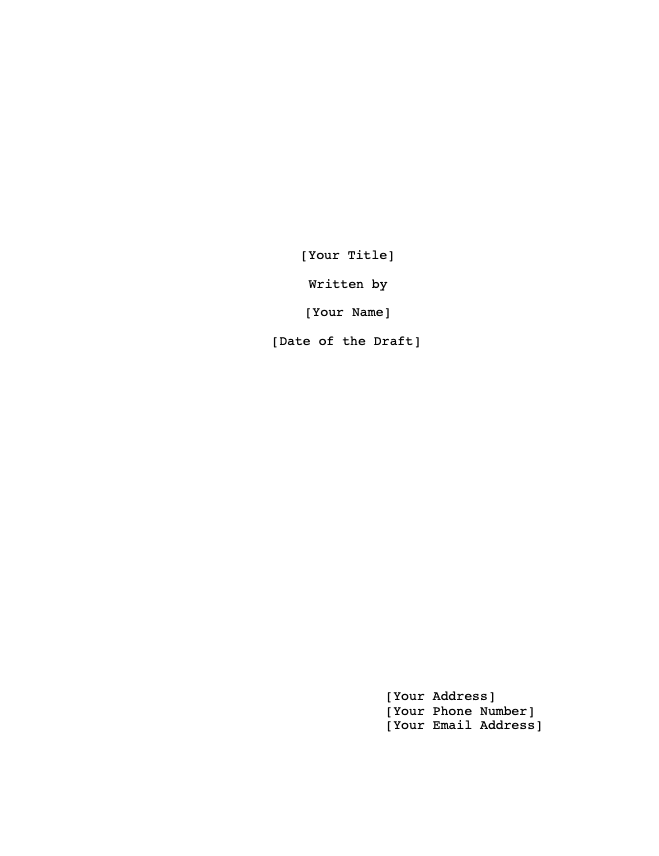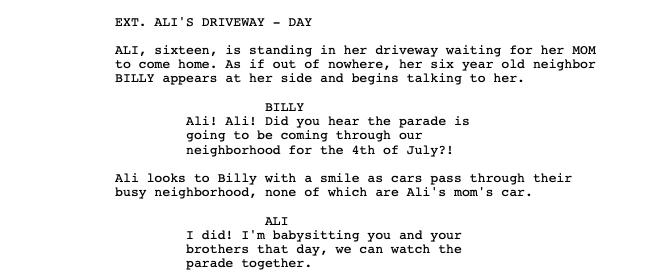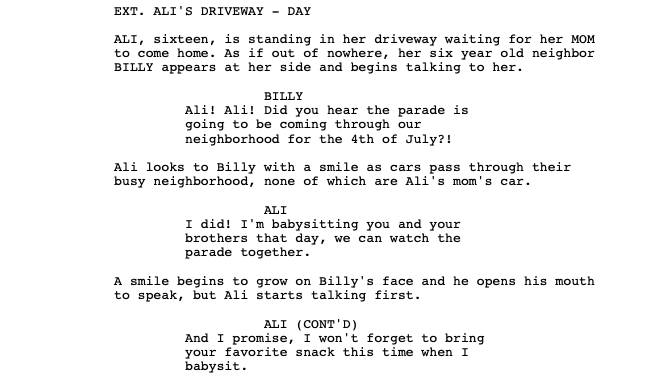Why the Screenplay Format Works
If you think you’re ready to start writing your first screenplay, it’s important to remember that there’s a particular screenplay format that should be followed when writing your script. Let’s briefly go over what that form is.
In his book Screenplay: The Foundations of Screenwriting, Syd Field does an incredible job mapping out the foundational principles behind screenwriting. He lays the claim that movies combine the principles of art and science, and despite the fact that film has undergone innumerable change, “the art of storytelling” has not changed.
As someone who has read countless screenplays in his career, Field acknowledges that the screenplays that he praises and that have been picked up and produced are ones that contain certain characteristics.
No matter how different screenplays are content-wise, and no matter how differently they’re executed when they’re produced, there are certain concepts which are consistently followed, which leads him to lay out the principles of his paradigm.
The paradigm looks like this: Act I: The Set Up, Act II: Confrontation, Act III: Resolution. This form is the glue that holds the narrative together; it is the foundation of dramatic structure and it is this structure which holds the story together.
Field describes these acts in great detail, but for the sake of this post, we will keep it simple. Act I introduces viewers to the world of the film. Act II establishes what the character needs and is the part of the movie where the character will encounter obstacles that keep him or her from achieving that need. Both Act I and Act II end with something called a plot point, which is something that moves the story forward. And Act III resolves the story.
Content-wise, that is how your screenplay should be organized.
It should also be formatted in a particular way on the page.
Let’s begin by looking at what a screenplay title page format looks like.
On the first page of screenplay, be sure to list the title of your screenplay, your name, the date of the draft, and your contact information in the bottom right hand corner. It should look something like this:

Next, when you begin a scene in your screenplay, make sure you begin with a scene heading. This is a one line heading which tells readers where the scene takes place and what time of day it is.
An example of a scene header would be this: EXT. ALI’S DRIVEWAY – DAY.
Lastly, immediately following your scene header, you should include your action lines, which describe what is happening in your scene.
It could look something like this:
ALI, sixteen, is standing in her driveway waiting for her MOM to come home. As if out of nowhere, her six year old neighbor BILLY appears at her side and begins talking to her.
Following this block of action, you can begin laying out the dialogue between the two characters.
Then, you just repeat these steps for the entirety of your screenplay, melding together scene headings, action lines, and dialogue. Let’s look at what it looks like all together.

This may seem like a daunting task because there are so many rules, but luckily for you, there are numerous resources which will help you to format your screenplay, one being Fountainize. This platform will allow you to type your content, then it will format it properly for you.
Now, let’s go over some reasons why this format works.
Even though it sounds like a rigid structure, there are many reasons why it works and still allows for you to have your own unique voice within your film.
1. Lends Appropriate Pacing to the Story
By breaking down your screenplay into scenes, it creates a very even flow throughout your story. Unlike prose, which is broken down by chapter, your scene headings give very explicit clues into what will occur throughout your story.
Even if you only look at the scene headings, you will still be able to gauge how the story will flow because you know where and when the scenes are taking place.
Additionally, because there is so little text on the page even with your action blocks and pieces of dialogue, the screenplay format breaks your story down into a very concise piece of writing that is easy to follow for those who are examining your work.
2. One Page Generally Means One Minute of Screen Time
Similar to the point above with pacing, once you know how to format a screenplay, you can generally gauge how long your film will be once it is filmed. As a general rule of thumb, one page of a script correlates with one minute of screen time.
Knowing this, you will be able to gauge how much more you need to write or how much you may need to cut. If you’re aiming to write a short film, you probably want to aim for 20-25 pages, whereas if you’re aiming to produce a feature, you want to aim for 90-120 pages.
3. Gives Structure to the Film itself

To circle back to Syd Field’s paradigm, the screenplay format lends a needed structure to your film. By following the three act structure that Field describes, it creates a story that flows and engages readers and viewers through a structured introduction and elicits continued engagement through the plot points that keep the story moving forward.
4. Easy for Different Departments to Read
Because there is a uniform way of formatting a script, it makes it easy for different departments who may be looking for different elements in your screenplay to easily find what they are looking for.
As detailed above, each scene is separated by a scene header. This can point different departments, particularly those in production design, toward what actors and costumes they may need for each scene.
Furthermore, the first time a character is introduced, their name is written in all capitals. If a character has already been introduced but is being introduced at a different age, like in a flashback, their name will be written in all capitals again. This will also help production designers because they will know which actors they need in the scenes.
This can also be linked with the sound design department. In a screenplay, sound effects are also capitalized. For example, a sound like ROAR would be capitalized, which would stand out on the page and allow for sound designers to be prepared for the work that is to come.
5. Dialogue for Actors
Though we didn’t go over it explicitly above, dialogue also follows a rigid pattern as well.
When writing character dialogue, you center the character’s name on the page and write their name in all capitals, then underneath it, still centered, you write their dialogue. If they are off screen or it is a voice over, you indicate that with (O.S.) or (V.O.) after their name. If their dialogue is followed by action and then that same character is speaking again, it is indicated as (CONT’D) after the character’s name.

Because all screenplays follow the same format, as stated many times above, it allows for actors reading the script to easily identify what dialogue is theirs and help them to easily prepare for auditions or filming.
6. Proves You’re Prepared
Lastly, even if you’ve used a platform like Fountainize or Celtx to format your screenplay, when a producer is reading your script and sees that you’ve followed the proper formula, it will prove that you’ve done your research and have put in the work to make your script the best that it can be. It will emphasize to them that you have familiarized yourself with the film world.
An improperly formatted script will easily be brushed to the side, but a well-written and well-formatted screenplay will be noticed and have a higher likelihood of being considered for production.
Think you’re ready to produce your own screenplay? Check out our funding opportunities that will help you to receive the funds you need to produce your own film!